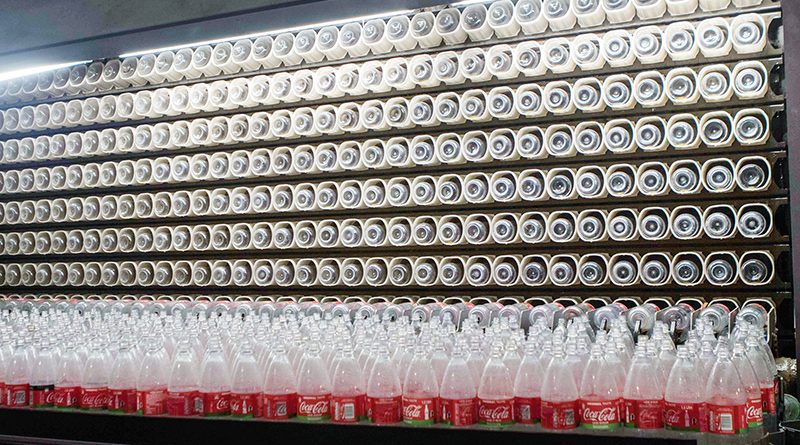Coca-Cola Peninsula Beverages relies on resource-saving technology from KHS
Steadily decreasing rainfall and rising temperatures have been causing devastating droughts and extreme famines since 2015, especially in the southern part of the subcontinent. Malawi, Zambia, Namibia, Zimbabwe and Botswana are among the countries affected but also South Africa – a country more associated with the lush green fruit and wine-growing regions of the Cape region and the subtropical forests of the east coast. As large water consumers, beverage bottlers such as CCPB are particularly under the scrutiny of the public in situations as dramatic as a water crises.
Coca-Cola Peninsula Beverages (CCPB) consistently focuses on reducing its footprint in a region where climate protection is already a matter of survival. This South African bottler gets support through resource-saving technologies from KHS. Greg Morse, Manufacturing and Supply Chain Director bei CCPB explains: “We’re working relentlessly to minimise our carbon footprint at all levels. We started doing so in the early 2000’s by combining the four manufacturing plants within our territory to form a mega manufacturing facility in Parow Industria, a suburb to the east of Cape Town.” Today, this includes activities such as Coca-Cola’s “World Without Waste” program, with which, by 2030, the company plans to collect and recycle as many bottles and cans from refuse as can be sold worldwide. CCPB is involved, for example, in organizations that want to expand the recycling of PET and glass bottles in South Africa. This is a logical step considering that the bottler makes its own preforms and is desperately searching for rPET in order to achieve its goal of using an average of 25% recycled material. Even the PET bottles for the Bonaqua water brand are made of 100% recyclate.
CCPB’s sustainability strategy also includes using more returnable bottles made of both glass and plastic than some of its competitors: the share of the product range is currently around 20% and should reach 40% by 2025. This not only significantly helps to prevent waste and thus achieve ecological sustainability but is also viable from an economic standpoint. If a refillable PET bottle is returned, the product is sold for about 30% less – benefiting not only price-sensitive consumers but also the company itself, as in doing so it’s able to reach wider groups of buyers.
The returnable PET bottles are produced on a KHS InnoPET Blomax V stretch blow molder that was put into operation in 2019 – one of the first ever on the market. It scores above all with resource savings and a production process with a significantly smaller carbon footprint. Thanks to its optimized near-infrared (NIR) heater, this machine from the latest generation of KHS stretch blow molders consumes up to 10% less energy. The AirBackPlus air recovery system also included in the returnable bottle blowing process uses up to 40% less high-pressure air. The new technology also saves on resources when it comes to material consumption: the improved material distribution of the stretch blow molding process now uses the PET located below the neck ring that to date has remained unstretched, enabling lighter preforms to be used.
A major issue in connection with sustainability in South Africa is of course the responsible use of resources – water in particular. Water-saving technology helps in the production process: this modification was successfully completed with two new bottle washers the Dortmund system provider installed and put into operation in Parow last year. One of the machines processes returnable PET at respective capacities of up to 26,400 1.5-liter bottles an hour and up to 19,200 2.0-liter bottles per hour. The other washes up to 36,000 returnable glass bottles an hour with volumes ranging from 300 to 500 milliliters. Thanks to a number of innovations, each of the two uses about 25% less water than their predecessors. Based on this investment and a number of other measures with which CCPB achieves remarkable results, they have greatly helped to save on resources by reducing the water consumed per liter of finished beverage from 3.6 liters to 1.7 liters within the past twelve years.

